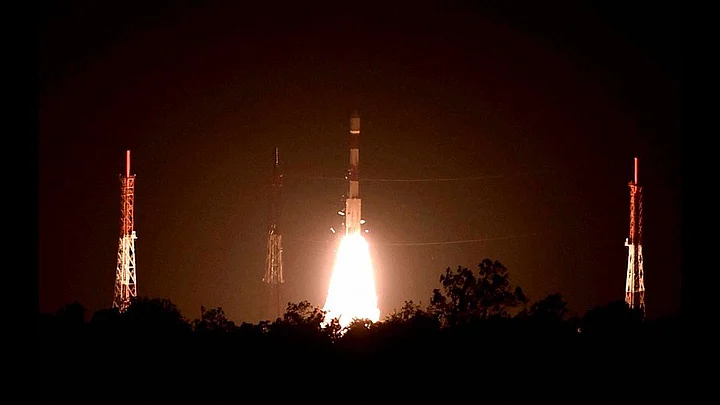If all goes well, India will be the first country in the developing world to have its very own telescope in space.
India’s very own turbo-charged ‘mini Hubble Telescope’ is ready for lift off. If successful, the Indian space agency will join a very select club, since only the USA, European Union and Japan have similar capabilities. China lacks a space observatory.
India’s first space observatory is ready and will be launched into space on the morning of September 28. This satellite is really akin to the mythical ‘third eye of Lord Shiva’ as it can view the Cosmos in ways the human eye is not capable of observing.
It will be used to study black holes and analyse how stars and galaxies are actually born and how they ultimately die.
A Historic Flight
This flight of the Polar Satellite Launch Vehicle (PSLV) is historic as, for the first time, American satellites are being launched by India. Till recently, the US had kept ISRO under sanctions and technology was being denied on a regular basis so much so that under pressure from USA, India was denied the critical cryogenic engine technology which pushed back Indian foray into deep space by two decades.
Now, these four small LEMUR satellites are being launched on a commercial basis for a San Francisco-based company.
India’s low cost of launching made the Americans shun their attitude of untouchability that they had adopted towards ISRO.
The PSLV will also carry a Canadian and an Indonesian small earth observing satellite as a piggyback payload. This will be the 31st flight of the workhorse PSLV rocket, which has had 30 consecutive successful flights till date.
Called the AstroSat, this unique Indian satellite has been made by the Indian Space Research Organisation (ISRO) and it will be launched from the spaceport at Sriharikota in Andhra Pradesh using the most powerful version of the Polar Satellite Launch Vehicle (PSLV).
It will be placed almost 650 kilometres above the surface of the Earth and is expected to have a mission life of 5-years.
Dr Kiran Kumar, Chairman of ISRO, said that “the global astronomy community is looking forward to this launch as no other global space-based telescope has comparable capabilities”.
ISRO on the Verge of Entering Big League
If the mission succeeds, ISRO will become the fourth space agency to have such frontline capabilities.
AstroSat comes in the wake of the highly-successful Mangalyaan mission, which made global history just a year ago when India became the first country to reach the Red Planet on its debut attempt. The Mars Orbiter Mission, or MOM, and AstroSat are comparable in both being low-cost missions with limited scientific capabilities.
The Astrosat has cost Rs 178 crore to make and has been made ready in ten years though it was conceived more than 20 years ago.
ISRO asserts that “India will be the only country having a multi-wavelength space-based observatory capable of monitoring intensity variations in a broad range of cosmic sources”.
Professor Sujan Sengupta from the Indian Institute of Astrophysics, Bengaluru, says, “AstroSat has modest capabilities, but it is unique as it can see in many wavelengths.”
AstroSat is the first scientific telescope in the world that has four in-built specialised cameras to simultaneously track objects in many-many different wavelengths. This multi- spectral viewing capability gives it a unique edge as compared to earlier space telescopes.
According to ISRO, the satellite will have concurrent wide spectral coverage over visible, ultra-violet, soft X-ray and hard X-ray regions of the spectrum.
The 1,515-kilogram satellite has been assembled at the ISRO Satellite Centre in Bengaluru. For the first time, several scientific institutions got together to contribute the scientific instruments.
Top Indian institutions like Tata Institute of Fundamental Research (TIFR), Mumbai; Indian Institute of Astrophysics (IIA), Bengaluru; Inter-University Centre for Astronomy and Astrophysics (IUCAA), Pune; and the Raman Research Institute (RRI), Bengaluru, are involved in payload development.
Two of the payloads are in collaboration with Canadian Space Agency (CSA) and University of Leicester, UK.
(The writer, Pallava Bagla, is a well-known science writer.)
(At The Quint, we question everything. Play an active role in shaping our journalism by becoming a member today.)
